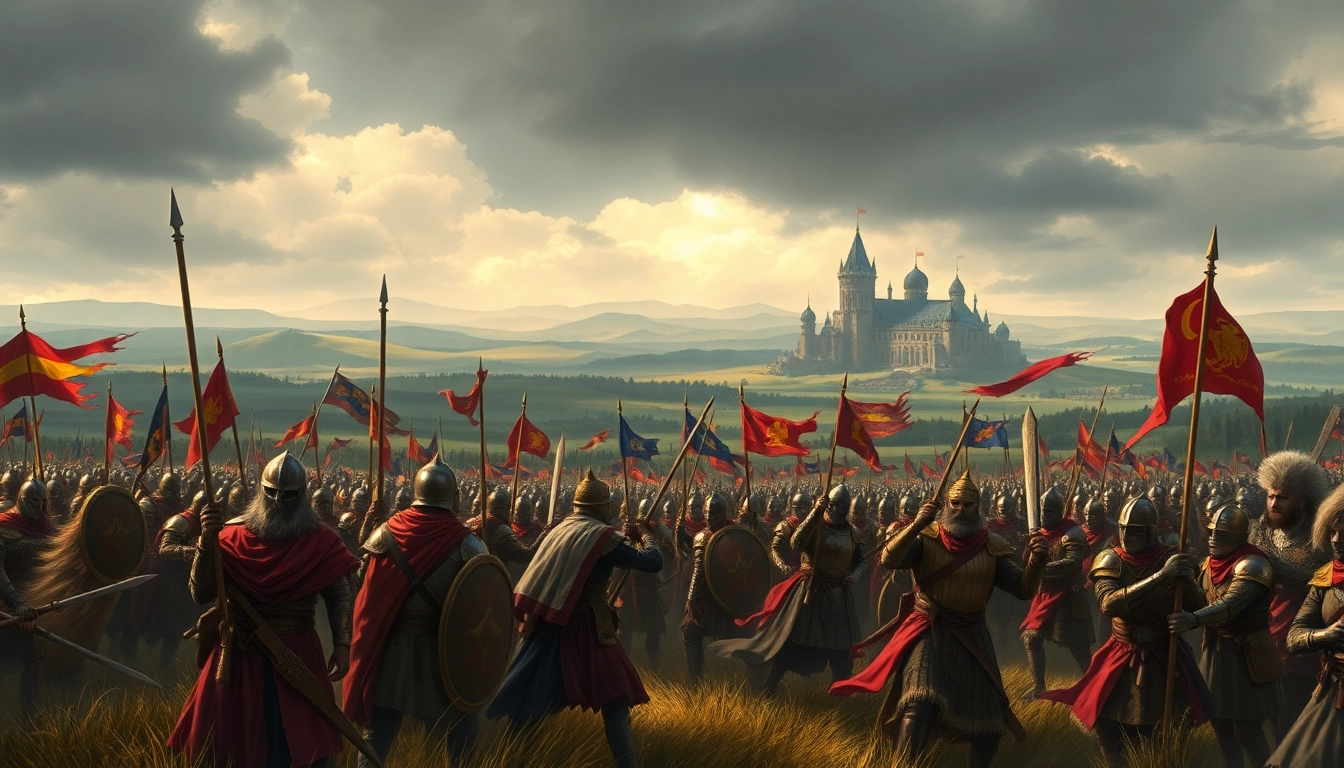Understanding the Warlords: Historical Context
The term ‘warlord’ evokes images of powerful leaders commanding armies, influencing their regions, and often reigning through fear or charisma. In various historical contexts, particularly in ancient and medieval societies, these figures have played significant roles in shaping political landscapes. To grasp the complex picture of warlords and their influence, we must first explore their backgrounds and the societies in which they emerged. Engaging with the history of warlords allows us to understand not just their military prowess but also the socio-political dynamics that facilitated their ascendancy.
The Role of Warlords in Ancient Societies
Warlords often arose during periods of chaos or fragmentation, stepping in to fill power vacuums left by weakened central authorities. In ancient China, for instance, warlords were key figures during the Warring States Period (475-221 BC), where competing states sought to dominate. These leaders were not merely military commanders; they were administrators and diplomats, managing lands, peoples, and resources. Their role was critical as they brought stability and governance, albeit often through force.
Key Characteristics of Effective Warlords
Effective warlords share several traits that enable them to maintain power and influence.
- Charisma: Many successful warlords exhibit a magnetic personality that inspires loyalty among their followers.
- Strategic Thinking: The ability to plan campaigns and foresee enemy movements is vital for any warlord aiming for long-lasting success.
- Resourcefulness: Effective warlords often excel in utilizing limited resources to achieve significant military and political gains.
These qualities, combined with the context of a leader’s era, often determine their success and legacy.
Impact of Warlords on Modern Leadership Practices
The lessons derived from the actions and strategies of historical warlords continue to resonate in modern leadership. Warlords, by necessity, were adept at navigating complex political landscapes, cultivating strong alliances, and maintaining control over diverse populations. Their dual challenges of warfare and governance have paved the way for studies in modern leadership practices, including conflict resolution, negotiation, and motivational techniques. Ultimately, the effectiveness of a warlord’s rule offers timeless lessons for leaders today who must inspire loyalty and make tough decisions while facing competition and adversity.
Strategies Employed by Warlords
Warlords utilized various strategies not only to win battles but also to build lasting power. Understanding their tactics provides valuable insights for modern leaders across various fields.
Military Tactics and Their Evolution
Warlords typically adapted their military tactics based on the changing nature of warfare. For example, the Mongolian warlords, led by figures like Genghis Khan, innovated with speed and mobility, employing cavalry units to devastating effect. This tactical evolution is crucial to examine, as it highlights how adaptability and innovation in strategy can lead to significant advantages over adversaries.
Building Alliances and Loyalty
In many cases, the strongest warlords were those who understood the importance of alliances. A potent example is the way Genghis Khan united various tribes under the Mongol banner. He implemented policies of inclusivity and meritocracy, where individuals were recognized for their contributions, engendering loyalty and reducing internal strife. Modern leaders can learn from this approach, emphasizing the importance of collaboration and shared goals in their own organizations.
Resource Management in Warfare
Effective warlords were also masters of resource management. They often knew the strategic significance of logistics, ensuring their armies were well-supplied and capable of sustained campaigns. The adept management of human resources, including training and retaining troops, was equally critical. Lessons here involve understanding the value of human capital in any project, recognizing that recruitment, training, and retention are central to success.
The Psychology of a Warlord
The psychological profile of a warlord plays a pivotal role in their effectiveness and leadership style. Understanding the inner workings of a warlord’s mind contributes to our comprehension of power dynamics and influence.
Leadership Styles Among Historical Warlords
Warlords often exhibit different leadership styles ranging from autocratic to transformative. Figures such as Hannibal Barca demonstrated a blend of tactical brilliance with charismatic leadership that inspired loyalty and courage among his troops, influencing their morale and performance on the battlefield.
The Influence of Charisma and Fear
The duality of using charisma and fear manifests distinctly in the leadership approaches of various warlords. While some relied on the power of persuasion to gain the hearts of people, others utilized fear as a mechanism for control. This complex relationship highlights an essential aspect of leadership—understanding the balance between inspiring a following and establishing authority.
Decision-Making Under Pressure
Warlords were often required to make critical decisions in high-pressure situations, where the stakes were life and death. The ability to remain calm and analytical, while also swiftly making strategic choices, defines effective leadership in any realm. A case study of Napoleon Bonaparte underscores this capacity, where his rapid decision-making often led to stunning military victories.
Lessons from Warlord Tactics for Modern Leaders
The insights gleaned from the tactics employed by historical warlords extend far beyond battlefields. Modern leaders can implement several key strategies in their own practices.
Transforming Conflict into Opportunity
Warlords frequently encountered conflict as part of their rule. The ability to turn confrontations into opportunities is a valuable lesson for leaders in any context. Genghis Khan adeptly navigated potential conflicts with neighboring tribes, often integrating them into his broader strategy rather than viewing them solely as threats. Such perspectives can empower modern organizations to approach challenges creatively as potential growth avenues rather than mere obstacles.
Negotiation Techniques Used by Warlords
Negotiation was pivotal to many warlords’ successes. They often forged critical alliances, negotiated treaties, or brokered surrender deals. Effective negotiators, like the late Roman general Scipio Africanus, adeptly used psychological tactics to sway opponents to their favor. Modern leaders can adopt similar negotiation strategies, focusing on finding common ground and leveraging strengths in discussions.
Ethics in Leadership: A Warlord’s Dilemma
One of the stark realities of being a warlord involved navigating a plethora of ethical dilemmas. Choices often had dire consequences. Warlords like Attila the Hun demonstrated that strategic ruthlessness could lead to temporary success, yet many modern leaders find sustained success requires ethical standards. A balance between actions that yield results and those that uphold morals is vital for enduring legacies.
Case Studies of Notable Warlords
Studying specific historical warlords can provide practical insights into their strategies and legacies.
Examining Genghis Khan’s Strategies
Genghis Khan reshaped the world with an empire that stretched over vast territories. His strategies included the use of psychological warfare, innovative military tactics, and a strong cultural assimilation policy to ensure loyalty. Understanding his comprehensive approach reveals lessons on the effectiveness of flexible strategies combined with a deep awareness of the socio-political context.
The Legacy of Napoleon Bonaparte
Another titan of war, Napoleon Bonaparte’s influence extended beyond the Napoleonic Wars. His adept use of propaganda, logistics, and the principle of meritocracy in governance left lasting templates for leadership. Analyzing his campaigns uncovers principles of strategic planning that can be integrated into contemporary organizational leadership models.
Modern Figures Channeling Historical Warlords
In examining contemporary leaders, we find parallels to historical warlords in their techniques and strategies. Figures such as military leaders in various global conflicts often embody traits reminiscent of their historical counterparts. Learning from both their successes and failures offers valuable insights into the characteristics that define effective leadership across the ages.



